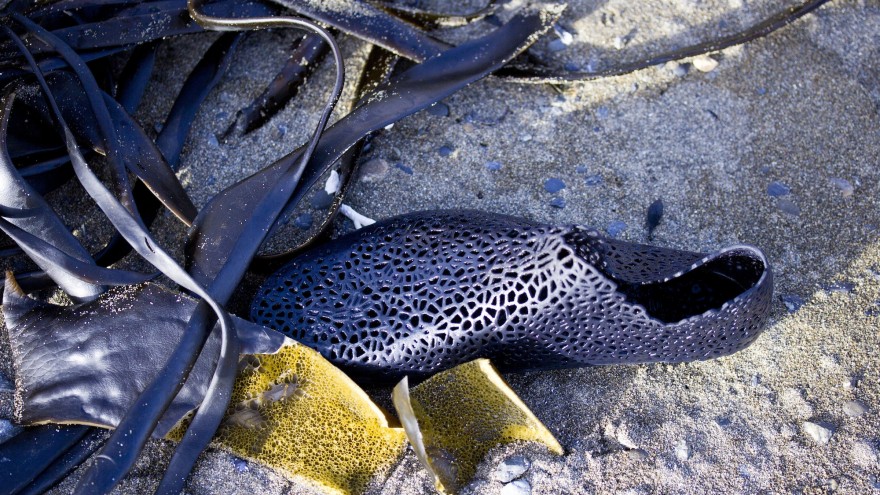The XYZ shoe, which explores the possibilities of rapid manufacturing techniques, by Earl Stewart is the culmination of his Masters thesis completed at Victoria University of Wellington, New Zealand.
“Coming from an industrial design background I saw the opportunity within the digital manufacturing to push towards innovation and re-thinking conventional wisdom,” Stewart explains. "I specifically chose footwear because I have a real passion for it. It also allowed me to rethink functional design and exploring the opportunities for customisation through digital manufacturing."
He took a 'total sum' approach to the design and process wanting to find a way to meet the total needs of an individual:
“The novelist Thomas Wolfe puts it more eloquently in his novel Look Homeward, Angel, 1929: ‘But we are the sum of all the moments of our lives'. I wanted to approach the creation of an artefact through the celebration of individuality, to find a way to embody the narrative of personal identity within an object. Often as designers the total sum approach is out of reach as you cannot meet the needs of everyone coming into contact with your object.”
According to Stewart, digital manufacturing makes greater and easier customisation a possibility. “The 'total sum' approach is a response to the shift in production where mass customisation means we can consider greater complexity within the design process,” he says.
As a designer I am fascinated with how a product is conceived and I think the pursuit of embodying the sum of all your experiences within object carries immense value.
The design process uses accurate 3D scans of the feet, this allows for parametric design principles to be employed. The sole is designed in collaboration with a podiatrist to ensure comfort, stability and proper alignment.
Once the design is digitally modelled the shoe is printed. “The 3D printing process has a high resolution to really highlight the details of the digital modelling and results in a shoes that is unique to the user.”
Utilising the Objet500 Connex multi-material 3D printer range, he was able to achieve flexibility and rigidity in a single seamless form. This means that he can cater for the highly specialised biomechanical needs of an individual foot. The shoe is made up of different layers of material combination, from a soft flexible rubber around the ankle and mid foot for comfort and flex, to a tough dentist rubber base sole to protect and support the foot.
I think the natural progression into this realm will see increasing adoption of traditional manufacturing or craft with emerging rapid manufacturing, he says.
Steward also sees 3D printing as a bridge between technology and biology. He looked to structural solutions and systems that occur naturally for inspiration and hopes that this heralds design artefacts that are expressive of their environment as much as they are an expression of the individual.
Steward is currently exploring production options for the XYZ Shoe. “The manufacturing is tricky as at the moment there is only one possible way the shoes can be produced, but the future seems bright for the footwear industry to get some fresh new kicks on the market,” he says.













